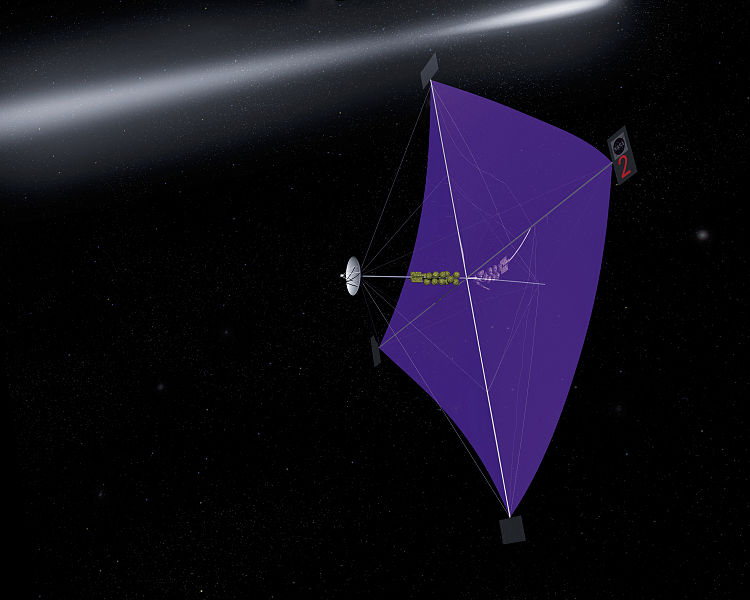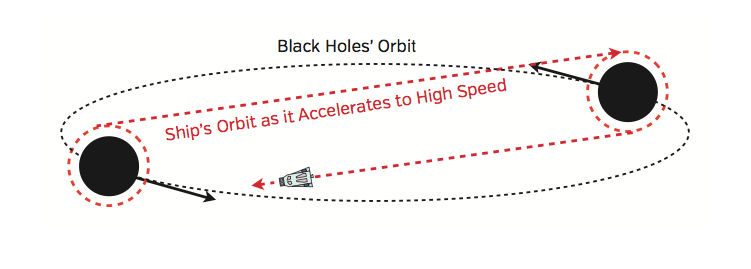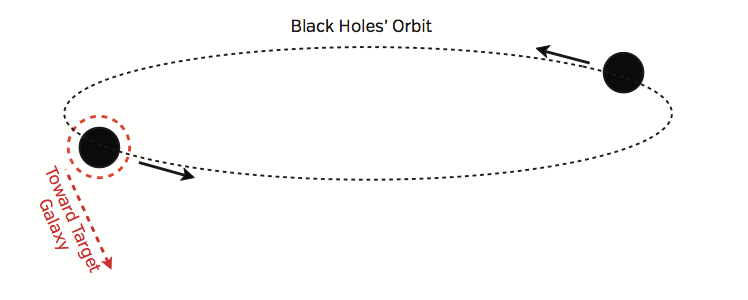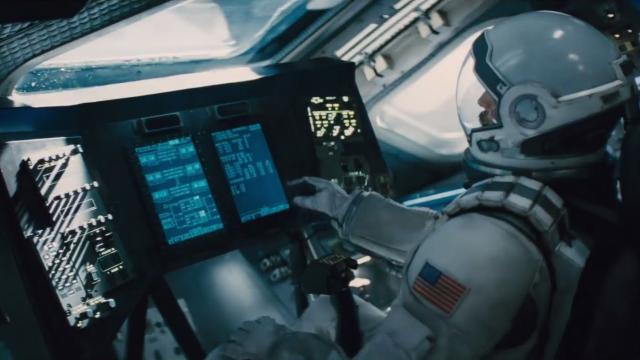Technically savvy scientists and engineers have put much effort into conceiving far-future technologies that might make possible near- light-speed travel. You can learn a lot about their ideas by browsing the web. It will take many centuries for humans to make any of those ideas real, I think. But they do convince me that ultra-advanced civilisations are likely to travel between the stars at a tenth the speed of light or faster.
Here are three far-out examples of near-light-speed propulsion that intrigue me.
This post has been excerpted from The Science of Interstellar by Kip Thorne, available now on Amazon and Barnes and Noble.
Thermonuclear Fusion
Thermonuclear fusion is the most conventional of the three ideas. R&D to develop controlled-fusion power plants on Earth was initiated in the 1950s, and full success will not come until the 2050s. A full century of R&D! That’s a realistic measure of the difficulties.
And what will fusion power plants in 2050 mean for spacecraft propulsion by fusion? The most practical designs may achieve 100 kilometers per second, and conceivably 300 kilometers per second by the end of this century. A whole new approach to harnessing fusion will be required for reaching near light speed.
A simple calculation shows fusion’s possibility: When two deuterium (heavy hydrogen) atoms are fused to form a helium atom, 0.0064 (nearly 1 per cent) of their rest mass gets converted into energy. If this were all transformed to kinetic energy (energy of motion) of the helium atom, the atom would move at about one-tenth the speed of light.1 This suggests that, if we could convert all the fusion energy of deuterium fuel into ordered motion of a spacecraft, we could achieve a spacecraft speed of roughly 1/10 the speed of light — and somewhat higher if we are clever.
In 1968 Freeman Dyson, a brilliant physicist for whom I have great respect, described and analysed a crude propulsion system that, in the hands of a sufficiently advanced civilisation, could achieve this.

Thermonuclear bombs (“hydrogen bombs”) are detonated just behind a hemispherical shock absorber that is 20 kilometers in diameter. The bomb debris pushes the ship forward, achieving, in Dyson’s most optimistic estimate, a speed one-thirtieth that of light. A less crude design could do somewhat better. In 1968 Dyson estimated that such a propulsion system would not be practical any sooner than the late twenty-second century, 150 years from now. I think that’s overly optimistic.
Laser Beam and Light Sail
In 1962 Robert Forward, another physicist whom I respect, wrote a short article in a popular magazine about a spacecraft with a sail, pushed by a distant, focused laser beam (Forward 1962). In a 1984 technical article, he made this concept more sophisticated and precise.
An array of solar-powered lasers in space or on the Moon generates a laser beam with 7.2 terawatts of power (about twice the total power consumption of the United States in 2014!). This beam is focused, by a Fresnel lens 1000 kilometers in diameter. It is focused onto a distant sail, 100 kilometers in diameter and weighing about 1000 metric tons, that is attached to a less massive spacecraft. (The beam direction must be accurate to about a millionth of an arcsecond.) The beam’s light pressure pushes the sail and spacecraft up to about a fifth the speed of light halfway through a forty-year trip to Proxima Centauri. A modification of this scheme then slows the ship down during the second half of the trip, so it arrives at its destination with a speed low enough to rendezvous with a planet. (Can you figure out how the slow down is achieved?)

Forward, like Dyson, imagined his scheme practical in the twenty-second century. When I look at the technical challenges, I think longer.
Gravitational Slingshots in a Black-Hole Binary
My third example is my own wild — very wild! — variant of an idea due to Dyson (1963).
Suppose you want to fly across much of the universe (not just inter- stellar travel, but intergalactic travel) at near light speed in a few years of your own life. You can do so with the aid of two black holes that are orbiting each other, a black-hole binary. They must be in a highly elliptical orbit and must be large enough that their tidal forces do not destroy your ship.

Using chemical or nuclear fuel, you navigate your ship into an orbit that comes close to one of the black holes: a so-called zoom-whirl orbit (pictured above). Your ship zooms close to the hole, whirls around it a few times, and then, when the hole is travelling nearly directly toward its companion, the ship zooms out, crosses over to the companion hole, and slides into a whirl around it. If the two holes are still headed toward each other, the whirl is brief: you zoom back toward the first hole. If the holes are no longer headed toward each other, the whirl is much longer; you must park yourself in orbit around the second hole until the holes are again headed toward each other, and then launch back toward the first hole. In this way, always travelling between holes only when the holes are approaching each other, your ship gets boosted to higher and higher speeds, approaching as close as you wish to the speed of light if the binary is sufficiently elliptical.
It is a remarkable fact that you only need a small amount of rocket fuel to control how long you linger around each hole. The key is to navigate onto the hole’s critical orbit, and there perform your con- trolled whirl. I discuss the critical orbit in Chapter 27. For now, suffice it to say that this is a highly unstable orbit. It is rather like riding a motorcycle around a very smooth volcano rim. If you balance deli- cately, you can stay on the rim as long as you want. When you wish to leave, a slight turn of the bike’s front wheel will send you careening off the rim. When you want to leave the critical orbit, a slight rocket thrust will enable centrifugal forces to take over and send your ship careen- ing toward the other black hole.
Once you are as close to the speed of light as you wish, you can launch yourself off a critical orbit toward your target galaxy in the distant universe.

The trip may be long; as much as 10 billion light-years’ distance. But when you move at near light speed, your time flows far more slowly than on Earth. If you are close enough to light speed, you can make it to your target in a few years or less, as measured by you — slowing down with the aid of a highly elliptical black-hole binary at your target, if you can find one!
You can return home by the same method. But your homecoming may not be pleasant. Billions of years will have passed at home, while you have aged only a few years. Imagine what you find.
These types of slingshots could provide a means for spreading a civilisation across the great reaches of intergalactic space. The princi- pal obstacle (perhaps insurmountable!) is finding, or making, the needed black hole binaries. The launch binary might not be a problem if you are a sufficiently advanced civilisation, but the slow-down binary is another matter.
What happens to you if there is no slow-down binary, or there is one, but your aim is bad and you miss it? This is a tricky question because of the expansion of the universe. Think about it.
As exciting as these three far-future propulsion systems may seem, they truly are far future. Using twenty-first-century technology, we are stuck with thousands of years to reach other solar systems. The only hope (an exceedingly faint hope) for faster interstellar travel, in the event of an earthly disaster, is a wormhole like that in Interstellar, or some other extreme form of spacetime warp.
Adapted from The Science of Interstellar by Kip Thorne. Copyright © 2014 by Kip Thorne. With permission of the publisher, W. W. Norton & Company, Inc. All rights reserved.
